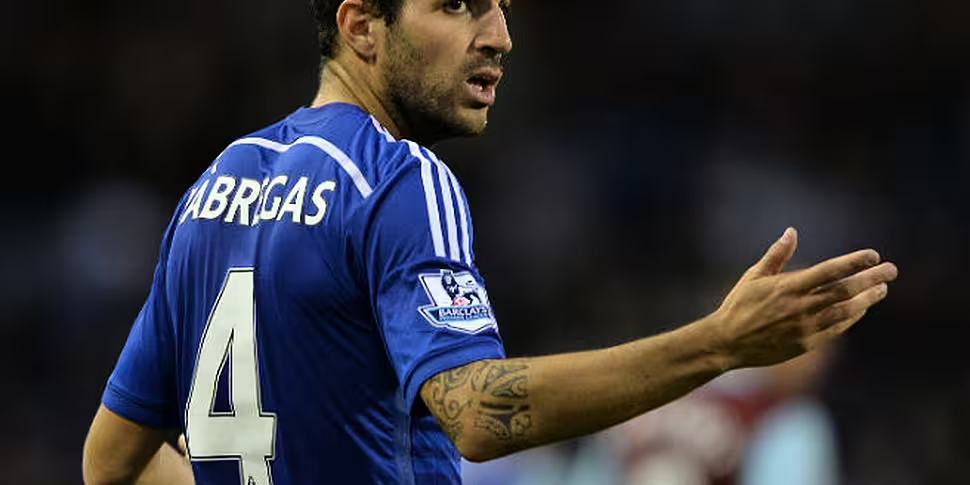All stats are courtesy of statistics website Squawka. Learn more about Squawka and the free app by clicking here.
Any notion that Cesc Fabregas has forgotten how to shine in the Premier League was banished last night in a brilliant performance marked by an all-action display which contained an early assist of the season contender for Andre Schurrle.
According to his manager Jose Mourinho's post-match comments, Fabregas dictated the speed and intensity of Chelsea's attacks and as Squawka showed on Twitter he was everywhere:
HEAT MAP: Cesc Fabregas absolutely bossed it for Chelsea tonight. pic.twitter.com/ypUyMoc0M0
— Squawka Football (@Squawka) August 18, 2014
Overall, the former Barcelona and Arsenal midfielder created three chances, managed two assists and also worked hard defensively with three interceptions and three successful tackles from five.
But it was interesting to see how his midfield colleagues operated around him in the 3 - 1 win over Burnley.
Nemanja Matic's role is more straight-forward, sitting deeper - although his passing is a little bit more ambitious than John Obi Mikel.
Oscar's positioning was also interesting. At one point towards the end of the first half, it was noticeable that he was almost right on top of his centre halves, receiving the ball and then starting off a move.
But that appeared to be a temporary move and this Squawka map shows the origin of his passes tended to operate from the margins:

Find more graphics from the match on Squawka.com
Fabregas' Squawka passing map also shows the Spain international also prominent away from the centre, but he was significantly more busy in the central attacking midfield zone, making more passes in the final third than any other player.
So, all in all, does it quite replicate the 4-3-3 that Sky Sports pundits Gary Neville and Jamie Carragher were talking about pre-match?
A pragmatist, Mourinho has used many different systems. At Inter Milan, Wesley Sneijder was the key man in the 4-3-1-2 formation, while a 4-2-3-1 characterised by lightning counter-attacks was the main template at Real Madrid.
But 4-3-3 was his favoured system during his time at Porto and his first Chelsea spell, although the 2004 Champions League final against Monaco seemed to be more of a 4-3-1-2 with Deco in the No 10 role.
Be that as it may, Chelsea did not appear to play with a fixed No 10 - then again that's not too uncommon in the modern game - so it could be argued that it is a sort of 4-3-3 with slightly less physical power but a touch more technical ability than the Lampard-Makelele-Essien triumvirate of the 2005-06 era Chelsea.
But one thing that really does resemble his first Chelsea side however, is the immense pace and directness of the wingers, with Eden Hazard and Schurrle somewhat reminiscent of Damien Duff and Arjen Robben.
And it seems feeding those wider players was one of Mourinho's main goals, which might not be so surprising given his more direct traits.
Nineteen of Oscar's passes were to Hazard and Schurrle, with 20 of Fabregas' passes also aimed at that pacey duo. In contrast, the Spaniard and Brazilian only passed 15 times to each other during their time together on the pitch.
And just to underline his influence, Fabregas was involved in six of the top 11 pass combinations during the 90 minutes, more than any other midfielder on the pitch which shows how important he will be for this upgraded Chelsea.









